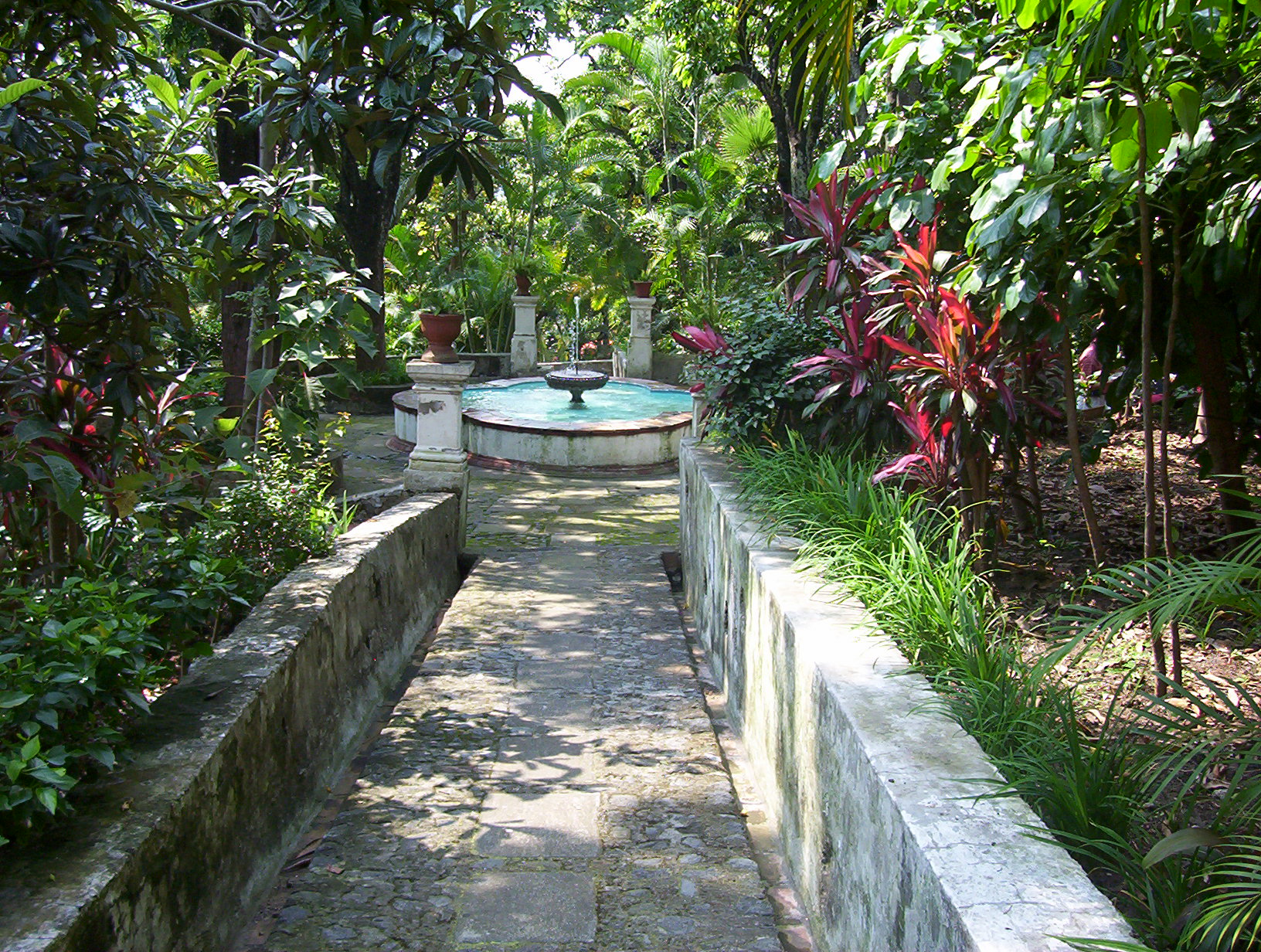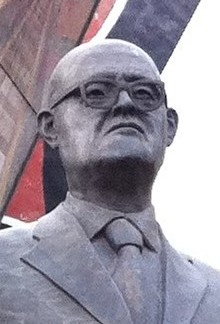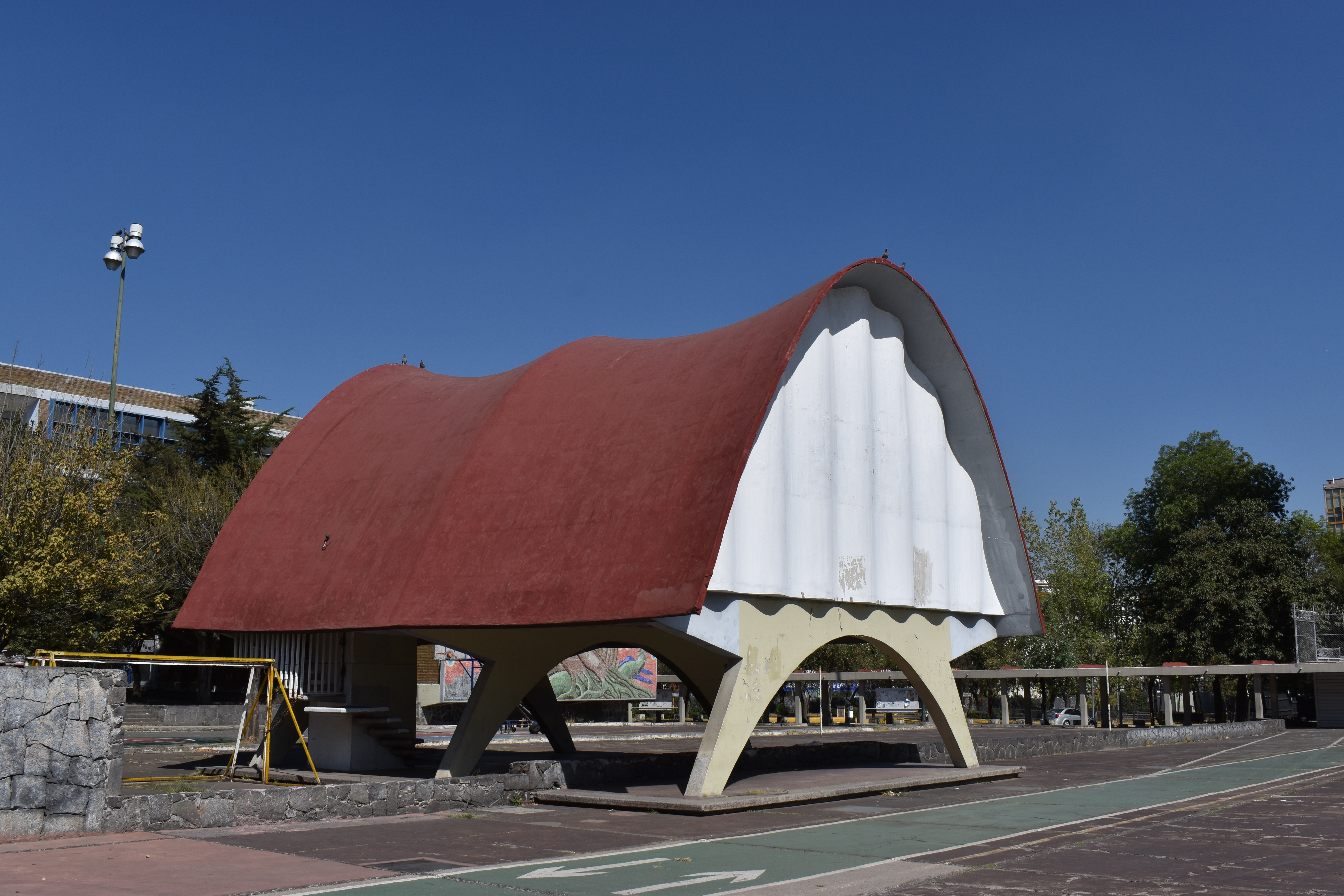|
Jesús Martí Martín
Jesús Martí Martín (1899–1975) was a Spanish architect and painter. His first love was always painting, but he trained as an architect and was successful in this profession in Madrid in the years before the Spanish Civil War. During the civil war he helped preserve national artistic treasures from the destruction of Madrid, and also designed bomb shelters. After the fall of the Second Spanish Republic in 1939 he fled to France, where he was interned for two months, then made his way to Paris and on to exile in Mexico. He resumed his career as an architect in Mexico, but gradually abandoned architecture in favour of painting. He chose not to exhibit his work and was little known until he was finally persuaded to put on a show in Mexico City at the age of 70, when he was acclaimed as a master of modern Mexican art. Early years Jesús Martí Martín was born in Castellón de la Plana, Spain, in 1899. At an early age he decided to become a painter, but his father advised him to ... [...More Info...] [...Related Items...] OR: [Wikipedia] [Google] [Baidu] |
Castellón De La Plana
Castellón de la Plana (officially in ca-valencia, Castelló de la Plana), or simply Castellón ( ca-valencia, Castelló, link=no) is the capital city of the province of Castellón, in the Valencian Community, Spain. It is located in the east of the Iberian Peninsula, on the Costa del Azahar (or ''Costa dels Tarongers'') by the Mediterranean Sea. The mountain range known as Desert de les Palmes rises inland north of the town. According to the 2018 census, Castellón has a population of 174,264 inhabitants (called ''castellonencs'' in Valencian), ranking as the fourth most populated city in the Valencian Community (after Valencia, Alicante and Elche). The Prime Meridian, or Greenwich Meridian, intersects the 40th parallel at Castellón de la Plana and is commemorated with a monolith in Meridian Park (''Parc del Meridià'') located at the exact point where this occurs. History The town inherited the name from a Moorish castle on the top of the hill of Magdalena (the ), a domina ... [...More Info...] [...Related Items...] OR: [Wikipedia] [Google] [Baidu] |
José Lino Vaamonde
José Lino Vaamonde Valencia (20 April 1900 – 3 October 1986) was a Spanish architect who played a leading role in preserving the nation's artistic treasures during the Spanish Civil War (1936–1939). Following the civil war he went into exile in Venezuela, where he became the head architect of the Shell subsidiary and developed a range of buildings including service stations, oil camps, colleges and office buildings. Early years (1900–1936) José Lino Vaamonde Valencia was born in Alongos, Orense, Spain, on 20 April 1900. He was one of eight brothers born into a well-off family connected with the counts of Torre de Penela. He studied Exact Sciences at the Central University (1921) and Architecture at the Superior Technical School of Architecture of Madrid (1927). He qualified as an architect in 1928. He was also secretary of the Real Madrid football club. Vaamonde participated in construction of the Madrid Metro and the Ourense-Santiago railway. He worked at the Cadastre ... [...More Info...] [...Related Items...] OR: [Wikipedia] [Google] [Baidu] |
Francoist Spain
Francoist Spain ( es, España franquista), or the Francoist dictatorship (), was the period of Spanish history between 1939 and 1975, when Francisco Franco ruled Spain after the Spanish Civil War with the title . After his death in 1975, Spain transitioned into a democracy. During this time period, Spain was officially known as the Spanish State (). The nature of the regime evolved and changed during its existence. Months after the start of the Spanish Civil War in July 1936, Franco emerged as the dominant rebel military leader and was proclaimed head of state on 1 October 1936, ruling a dictatorship over the territory controlled by the Nationalist faction. The 1937 Unification Decree, which merged all parties supporting the rebel side, led to Nationalist Spain becoming a single-party regime under the FET y de las JONS. The end of the war in 1939 brought the extension of the Franco rule to the whole country and the exile of Republican institutions. The Francoist dictatorshi ... [...More Info...] [...Related Items...] OR: [Wikipedia] [Google] [Baidu] |
Cuernavaca
Cuernavaca (; nci-IPA, Cuauhnāhuac, kʷawˈnaːwak "near the woods", ) is the capital and largest city of the state of Morelos in Mexico. The city is located around a 90-minute drive south of Mexico City using the Federal Highway 95D. The name ''Cuernavaca'' is a euphonism derived from the Nahuatl toponym and means 'surrounded by or close to trees'. The name was Hispanicized to ''Cuernavaca''; Hernán Cortés called it ''Coadnabaced'' in his letters to Charles V, Holy Roman Emperor, and Bernal Díaz del Castillo used the name ''Cuautlavaca'' in his chronicles. The coat-of-arms of the municipality is based on the pre-Columbian pictograph emblem of the city which depicts a tree trunk () with three branches, with foliage, and four roots colored red. There is a cut in the trunk in the form of a mouth, from which emerges a speech scroll, probably representing the language Nahuatl and by extension the locative suffix , meaning 'near'. Cuernavaca has long been a favorite escape fo ... [...More Info...] [...Related Items...] OR: [Wikipedia] [Google] [Baidu] |
Casino De La Selva
The Hotel Casino de la Selva (Jungle Casino Hotel) was a hotel and casino located in the city of Cuernavaca, Mexico. The main building was opened in 1931 as a hotel and casino, but from 1934 it was used only as a hotel. Additions in the late 1950s included buildings designed by the architect Félix Candela that were roofed by reinforced concrete paraboloid shells. The interior was decorated with murals by well-known Mexican and Spanish artists. After the 1970s the hotel went into decline, and in 1994 was sold to a hotel chain that failed to pay taxes on the property. It was seized by the Mexican government and was auctioned off in 2001 as a site for construction of a discount store and a hypermarket. After demolition had begun there was a public outcry, and eventually some parts of the murals were preserved. History Initial construction (1931) Cuernavaca in the early 1930s held the homes of several former generals who later became presidents, Plutarco Elías Calles, Lázaro Cárd ... [...More Info...] [...Related Items...] OR: [Wikipedia] [Google] [Baidu] |
Félix Candela
Félix Candela Outeriño (; January 27, 1910 – December 7, 1997) was a Spanish and Mexican architect who was born in Madrid and at the age of 26, emigrated to Mexico, acquiring double nationality. He is known for his significant role in the development of Mexican architecture and structural engineering. Candela's major contribution to architecture was the development of thin shells made out of reinforced concrete, popularly known as ''cascarones''. He was Santiago Calatrava's icon who has had a great influence on his works. Early life Felix Candela was born in Madrid, Spain in 1910. In 1927 Candela enrolled in La Escuela Superior de Arquitectura (Madrid Superior Technical School of Architecture), graduating in 1935; at which time Candela traveled to Germany to further study architecture. Early after he started classes, he developed a very keen sense of geometry and started teaching other students in private lessons. In his junior year, his visual intelligence and ... [...More Info...] [...Related Items...] OR: [Wikipedia] [Google] [Baidu] |
Acapulco
Acapulco de Juárez (), commonly called Acapulco ( , also , nah, Acapolco), is a city and major seaport in the state of Guerrero on the Pacific Coast of Mexico, south of Mexico City. Acapulco is located on a deep, semicircular bay and has been a port since the early colonial period of Mexico's history. It is a port of call for shipping and cruise lines running between Panama and San Francisco, California, United States. The city of Acapulco is the largest in the state, far larger than the state capital Chilpancingo. Acapulco is also Mexico's largest beach and balneario resort city. Acapulco de Juárez is the municipal seat of the municipality of Acapulco. The city is one of Mexico's oldest beach resorts, coming into prominence in the 1940s through the 1960s as a getaway for Hollywood stars and millionaires. Acapulco was once a popular tourist resort, but due to a massive upsurge in gang violence and homicide numbers since 2014, Acapulco no longer attracts many foreign touris ... [...More Info...] [...Related Items...] OR: [Wikipedia] [Google] [Baidu] |
Veracruz
Veracruz (), formally Veracruz de Ignacio de la Llave (), officially the Free and Sovereign State of Veracruz de Ignacio de la Llave ( es, Estado Libre y Soberano de Veracruz de Ignacio de la Llave), is one of the 31 states which, along with Mexico City, comprise the 32 Federal Entities of Mexico. It is located in eastern Mexico and is bordered by seven states, which are Tamaulipas, San Luis Potosí, Hidalgo, Puebla, Oaxaca, Chiapas, and Tabasco. Veracruz is divided into 212 municipalities, and its capital city is Xalapa-Enríquez. Veracruz has a significant share of the coastline of the Gulf of Mexico on the east of the state. The state is noted for its mixed ethnic and indigenous populations. Its cuisine reflects the many cultural influences that have come through the state because of the importance of the port of Veracruz. In addition to the capital city, the state's largest cities include Veracruz, Coatzacoalcos, Córdoba, Minatitlán, Poza Rica, Boca Del Río and Or ... [...More Info...] [...Related Items...] OR: [Wikipedia] [Google] [Baidu] |
Manuel Suárez Y Suárez
Manuel Suárez y Suárez (23 March 1896 – 23 July 1987) was a Spanish immigrant to Mexico who became a successful entrepreneur and patron of the arts. He is known for the Casino de la Selva in Cuernavaca, the Hotel de México, and the adjacent Polyforum Cultural Siqueiros. Early years (1896–1919) Manuel Suárez y Suárez was born on 23 March 1896 in Téifaros, from Navia, Asturias. He was the second son of a family of ten. His parents were cousins, Balbina Suárez Rodríguez of Téifaros and Manuel Suárez Fernández of Loredo, Villayón. They grew potatoes and grain, and had two cows and a donkey. He received a basic education in the village school, and acquired a love of books. Manuel's older brother Joaquin moved to Mexico to work on the dairy farm of his uncle Joaquín Rodríguez y García Loredo, but when he arrived found his uncle had died. Joaquin became a clerk at the wholesale grain merchant Casa Peral Alverde and saved up to fund Manuel's journey to Mexico. In th ... [...More Info...] [...Related Items...] OR: [Wikipedia] [Google] [Baidu] |

.jpg)



